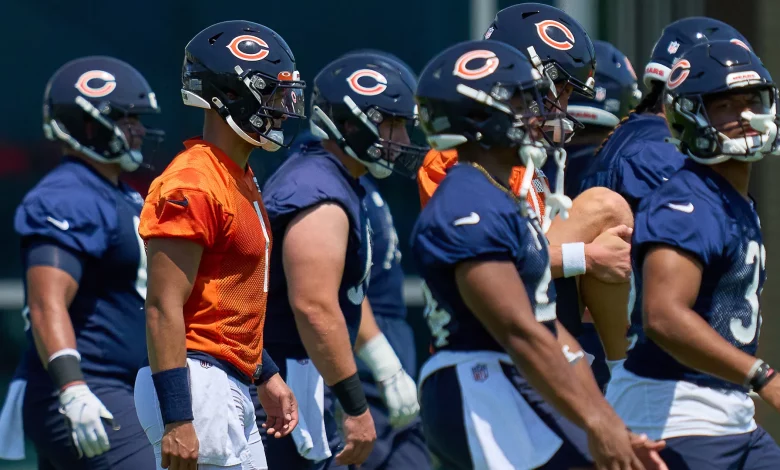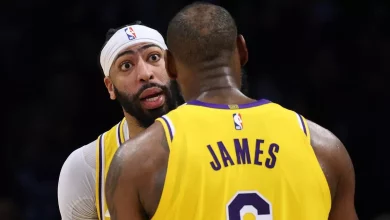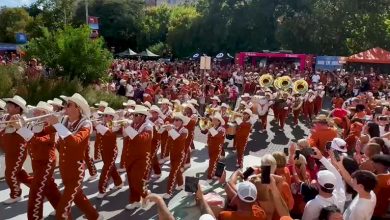Five veteran players on the Chicago Bears roster could face roster cuts during training camp as the team evaluates depth, performance, and potential replacements to strengthen their overall squad.

Training camp in the NFL serves as a critical period for teams to evaluate their roster depth, performance, and potential. For the Chicago Bears, a franchise striving to build a competitive and adaptable squad, the process involves tough decisions—particularly regarding veteran players who may no longer fit the team’s evolving strategic vision. While veterans bring experience, leadership, and stability, they can also be cap casualties or roster spots sacrificed for younger, more promising talent. This analysis explores five veteran players who could face the axe during Bears training camp, delving into the reasoning behind such potential moves, the players’ current roles, and the broader organizational context.
The Significance of Roster Management and Veteran Evaluation
Why Roster Cuts Matter
In the NFL, roster management is a delicate balance. Teams must optimize their roster to maximize talent, minimize salary cap burdens, and cultivate a competitive environment. Veterans, often earning higher salaries and occupying leadership roles, can become expendable if younger players demonstrate equal or greater potential or if their skill sets no longer align with the team’s strategic direction.
Training Camp as a Crucible
Training camp functions as the crucible where roster decisions are made. Coaches evaluate players through drills, scrimmages, and situational practices. Performance, effort, health, and scheme fit are scrutinized. For veterans, especially those on the bubble, the stakes are high—they must prove their value or face potential release.
Strategic Considerations
Teams weigh several factors: salary cap implications, positional depth, injury history, positional competition, and long-term development plans. Sometimes, releasing a veteran frees cap space or opens opportunities for younger players to develop, which aligns with a team’s rebuilding or strategic transition goals.
The Chicago Bears’ 2023 Context and Roster Dynamics
The Bears, under new head coach Matt Eberflus and general manager Ryan Poles, have been focused on rebuilding their roster with a mix of young talent and experienced players. The team’s recent drafts, free-agent signings, and strategic shifts suggest a focus on building a resilient, versatile squad capable of competing in the NFC North.
Key Roster Themes
Youth Movement: The Bears have prioritized drafting and developing young talent at key positions.
Cap Management: Managing the salary cap to allow flexibility for future moves.
Positional Competition: Creating healthy competition to elevate player performance.
Scheme Fit: Ensuring players align with the team’s defensive and offensive schemes.
Given these themes, some veterans may find themselves at risk if their performances do not meet expectations or if younger alternatives emerge as better fits.
Five Chicago Bears Veterans Who Could Face Roster Cuts
Below are five veteran players who could potentially be cut during training camp, based on current roster depth, performance trajectory, and strategic fit. The list includes players from various positions, reflecting the diverse considerations involved in roster trimming.
1. David Montgomery – Running Back
Current Role and Performance
David Montgomery has been a reliable starter for the Bears, serving as a workhorse back since joining the team in 2019. Known for his toughness, vision, and pass-catching ability, Montgomery has been an integral part of the offense.
Why He Might Face Cuts
Emerging Talent: The Bears drafted Roshon Johnson in 2023 and signed other backs to challenge Montgomery’s grip on the starting role.
Cap Considerations: While Montgomery is a valuable player, his salary might be considered expendable if the team opts to prioritize cap space for other needs.
Scheme Fit: The team may want a different style of runner or utilize a committee approach rather than a bell-cow back.
Potential Scenarios
If Montgomery struggles in camp or if younger backs outperform him, the Bears could consider releasing or trading him to open up cap space and give younger players more reps.
2. N’Keal Harry – Wide Receiver
Current Role and Performance
N’Keal Harry was acquired in 2022 after a disappointing stint with the Patriots. His size and athleticism made him an intriguing addition, but injuries and inconsistent hands hampered his impact.
Why He Might Face Cuts
Injury History: Harry’s injury setbacks have limited his development and availability.
Competition: The Bears added depth at receiver, including D.J. Moore and other younger receivers hungry for playing time.
Performance: To secure a roster spot, Harry must prove he can be a reliable target in camp, which is uncertain given past struggles.
Potential Scenarios
If Harry cannot establish himself as a consistent target or if other receivers outperform him, the Bears might decide to move on to maximize roster spots for younger, more dynamic pass-catchers.
3. Trevor Siemian – Backup Quarterback
Current Role and Performance
Trevor Siemian has served as a veteran backup quarterback, providing stability and experience behind Justin Fields.
Why He Might Face Cuts
Development of Justin Fields: The Bears may want to give more reps to developmental quarterbacks or rely on younger backups.
Cap Savings: While not a huge cap hit, releasing Siemian could free funds that might be allocated elsewhere.
Roster Flexibility: The team might prefer to carry a developmental quarterback with higher upside or more familiarity with the system.
Potential Scenarios
If the Bears believe that their backup QB competition can be won by a younger, more mobile player, Siemian could be released or moved to the practice squad.
4. Tashaun Gipson Sr. – Safety
Current Role and Performance
Tashaun Gipson Sr. has been a steady presence in the secondary, providing veteran leadership and coverage skills.
Why He Might Face Cuts
Age and Athletic Decline: At 33, Gipson may be viewed as nearing the end of his prime.
Young Talent: The Bears have invested in younger safeties who could develop into starters.
Scheme Fit and Performance: If Gipson’s performance drops or if the team shifts defensive schemes, his role could diminish.
Potential Scenarios
If younger safeties outperform Gipson in camp or if the team prioritizes youth and athleticism, the veteran might be released to open a roster spot for a future asset.
5. Cody Whitehair – Center
Current Role and Performance
Cody Whitehair has been a mainstay along the offensive line for years, providing veteran leadership and stability at center.
Why He Might Face Cuts
Injury Troubles and Decline: Whitehair has battled injuries and inconsistent play, which could impact his roster standing.
Younger Alternatives: The team has drafted or signed younger linemen who could develop into starters.
Cap and Roster Flexibility: Releasing Whitehair could free cap space and give opportunities for younger players to develop.
Potential Scenarios
If Whitehair struggles in camp or if the team aims to evaluate younger interior linemen, he could be released to create roster flexibility.
Broader Implications of Veteran Cuts
Impact on Team Chemistry and Leadership
Veterans often serve as locker room leaders, mentors to younger players, and stabilizing presences. Cutting veterans can test team chemistry but may also open opportunities for emerging leaders.
Financial Considerations
Releasing veterans often frees up significant salary cap space, which can be reallocated to key positions or future signings. This flexibility is vital for a team like the Bears, aiming to remain competitive while managing cap constraints.
Roster Competition and Development
Cuts allow younger players to step into larger roles, accelerating development and building depth. It also fosters a competitive environment that can elevate overall team performance.
Rebuilding or Re-tooling
For teams in transition, cutting veterans signals a focus on long-term development over short-term experience. The Bears, with their young core and strategic rebuild, may prioritize this approach.
The Process of Making Roster Decisions
Evaluation Period
During training camp, coaches assess players based on performance, effort, scheme fit, health, and potential. Veterans who do not meet expectations or who are outperformed by younger prospects risk being cut.
Preseason Games
Performance in preseason contests can be a decisive factor. Players who do not stand out or who make costly mistakes may find themselves on the bubble.
Final Roster Cuts
NFL teams must trim their rosters from 90 players to the regular-season limit (53 players). This process involves tough decisions, often favoring youth, upside, and scheme fit.
Navigating the Path Forward
While these five veterans—whether it’s a running back, receiver, quarterback, safety, or offensive lineman—could face the chopping block in Chicago Bears training camp, such decisions are driven by strategic considerations aimed at building a competitive, flexible, and sustainable roster. Cutting veterans is never easy, as it involves balancing experience, leadership, and team culture against roster depth, salary cap health, and long-term development. For the Bears, this process reflects their broader organizational goals: fostering a competitive environment, developing young talent, and positioning themselves for future success in the NFL landscape. Ultimately, these decisions, though difficult, are essential for the franchise’s evolution from rebuilding to contending, and they exemplify the delicate art of roster management in professional football.









